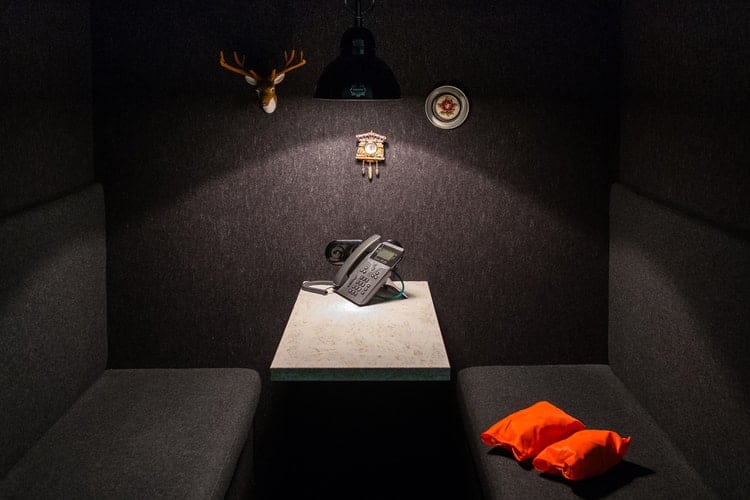The Conversation Piece SIP Trunk service is a natural outgrowth of our VoIP system. Known for excellence in telecommunication packages throughout Ireland, we, at Conversation Piece, are able to offer you state-of-the-art packages in IP phone systems, VoIP services, and Hosted PBX systems— just to name a few of our services. With our 40+ years of experience in voice and data communications, we have grown with the industry, only adding to our experience while the field advances exponentially.
No installation is too small or too large for us. Our years of experience and skills upgrading permits us to appreciate your corporate needs, whether your business is a large enterprise or a small, but growing concern. Our satisfied clients include the Noel Group, B&J Rochford, and Irish Mainport Holdings. Our extensive fleet of vehicles takes us all over Ireland, as our services are not limited to Cork and Dublin. “Flexible” is our middle name, and that applies to our services, as well as our commitment to satisfying our customers, wherever they are in Ireland.
How does SIP Trunking work?

A Session Initiation Protocol (SIP) Trunk uses the Internet to make phone calls that access the Public Switched Telephone Network (PSTN). SIP creates the start and end points of a call, and manages the data by packet-switching between the two points. The Session Initiation Protocol is based on an architecture that begins with your business phone system, is carried partially by your internal telecommunications infrastructure, and partially by your Trunk service provider. It then ends with the phone system you are calling. Depending on the type of telephony you are using, there may also be various gateways within the architectural design. Don’t worry. You will not need to pass an exam on numerous SIP and VoIP acronyms! Our staff will explain all the options pertaining to your particular phone setup, and describe how each option can assist the growth of your company. SIP Trunking is a product, and as such, it comes with a variety of features. Not all SIPs look the same.
The cost-saving benefits of SIP Trunks
One of the main benefits of Session Initiation Protocol Trunking for your business is the savings in the cost of your business telecommunications. Although, depending on the cost of your infrastructure, you may sustain an initial outlay, the long-term cost benefits are numerous.
Other Benefits of a SIP infrastructure from Conversation Piece:
You can throw away your costly conventional telephony system that doesn’t cope very well with the rise in call traffic weaving its way through today’s business world. When you replace your Public Switched Telephone Network (PSTN) and its 24-channel capacity per line Primary Rate Interfaces (PRIs), with an IP trunk, you’ll open up many more lines at lower costs, and with superior sound quality. As well, there’s no need to update cumbersome hardware. Software-driven telecommunications updates automatically.
SIP brings you more than Voice. It uses VoIP, but because it primes the start and end points of a connection, and controls the data along the connection, SIP brings you more. Together with voice, other forms of data, such as file transfer, Instant Messaging, and video, are also manageable on a SIP Trunk.
Your SIP phone number is transportable. Take it with you to your travel meetings all over the world. Avoid the costs of international phone calls. You can call other SIP numbers or standard PSTN telephone numbers. Let Conversation Piece help you save on long-distance phone calls. This is particularly beneficial for large undertakings whose business transactions depend heavily on long-distance conversations.

SIP provides you with feature-rich options that you are familiar with from your PSTN networks. Choose items such as call forwarding, call waiting, and call barring. Additional features, such as Email to Voice are now also available to you with your IP phone solution.You can get it all from Conversation Piece! We offer Smart hybrid solutions, directly available due to our close relationship with Panasonic Phone Systems Ireland. These systems are designed for SMBs (small and medium businesses), are easily expandable for large enterprises, and support both legacy PRI and IP phone set-ups.
The difference between Hosted PBX and SIP Trunking
The main visible difference between SIP and Hosted PBX is that SIP can transmit voice, data, email, files, and video in packet-switching technology. Hosted PBX is limited to voice data. Both replace PSTN wiring infrastructures with the Internet; however, SIP uses your internal, existing phone system, and an Internet Provider serves the Cloud for Hosted PBX. Conversation Piece is the top Cloud phone system provider in Ireland, and we are happy to discuss the differences and similarities between SIP and Hosted PBX Cloud options with you.
Calculating how many SIP Trunks your company needs
You can use an online calculator to determine the number and bandwidth of your Trunks, but do make sure that you factor in the nature of your business. Your Grade of Service (GoS) that calculates how many times a caller reached your company successfully, needs to be high if, for example, your business is totally administered and defined by a telephone system. In general, bear in mind that the more employees you hire, the less trunks you will need per number of people. This is because the higher the number of employees, the lower the chance that a larger percentage of them will need the phone concurrently.
SIP Trunk Pricing
Pricing varies with choices you make, and the features you add to your system. We understand our clients’ requirements by talking to you, and by making sure we study your existing systems. Together we can design a plan that works for your business. Pricing also varies with the type of subscription you select. Flat fee options are available, as well as per-minute pricing. You can choose between limited trunking that provides you with telephone networks, or unlimited Trunking that encompasses a broader Unified Communications system. SIP allows the transmission of video, so if you take advantage of this capability, for example, Session Initiation Protocol Trunking can turn out to be very cost-efficient for you.
How did SIP Trunking develop?

In days gone by you could only dial in to your local telephone exchange. To reach someone in a different city or country, or even someone not that far away, but in a different telephone exchange, you had to make a trunk call via a human operator. He plugged you in from the central exchange, using an available trunk line, if there was one available! Compare this to a SIP Trunk, whose lines are not physical, but which do connect you from a central “operator”, your Internet Service Provider, supplying voice on digital Trunk lines. One digital Trunk holds multiple virtual phone lines. At this point, any other similarities between these two types of Trunks fall by the wayside.
During the 1970’s and 1980’s, computer networks made their entrances, and much of the testing of telecommunications took place within networks in university graduate test laboratories. All you needed was more than one network, and a microphone. Well, it wasn’t quite that simple, but multiple networks, including networks contained within networks, spelled the beginnings of the Internet as we know it today. Everything begins with the Physical Layer, and this is where initial testing took place. Add the Internet Protocol (IP) to fibre optics for faster transmissions, send analogue data in digital packets, and we can see how SIP Trunking developed. We also need to thank Claude E. Shannon for his vision, and his mathematical model of analogue to digital to analogue communications.
FAQ
How many concurrent calls can a SIP trunk handle?
There is no one correct answer. It depends on the size of your company, your bandwidth, and the nature of your business, as well as the number of voice conversations that typically occur concurrently at any given period during work hours.
What is the difference between SIP and VoIP?
SIP and VoIP are both protocols. SIP adds a layer on top of VoIP by adding other types of data to the Voice data. It enables the transfer of voice, video, files, and more, using IP packet-switching.
What is the difference between a SIP line and a SIP channel?
There is no difference. A SIP Trunk can hold many SIP lines, which are the virtual connection channels between two ends of a telephone conversation.
Can my high-speed Internet connection be used with SIP Trunking?
Yes. In fact, it’s your Internet connection that enables SIP. It replaces legacy phone networks, but you can still connect your existing phones if they are SIP-compatible. High speed Internet is ideal because your Internet will need to handle the extra load of your SIP channels.
Let’s have a conversation about your current phone system
You don’t want to part with your older, legacy phone infrastructure? SIP Trunks are easily installed using modern phone systems. However, if you wish to hold on to your existing PBX system, let Conversation Piece convert it for you. Our SIP installations can add VoIP to any traditional phone exchange within your premises. You can then benefit from SIP features that allow you to lower the costs of your telecommunications network. Do you wish to revamp the apps for your Interactive Voice Response (IVR) system, or set up a Call Centre? Your business requirements may suit a customised Unified Communications system that we can design for your company. Our experienced staff is waiting to answer your questions, and discuss your options. We are happy to help.
Call us for a free quote now.
